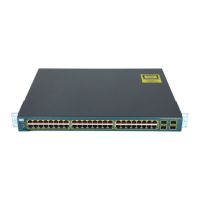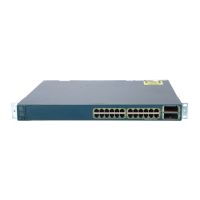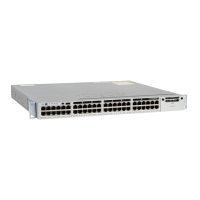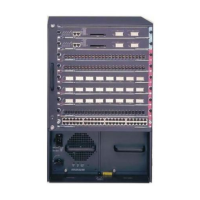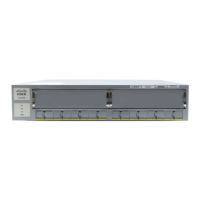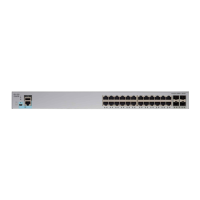31-15
Catalyst 3750 Switch Software Configuration Guide
78-16180-02
Chapter 31 Configuring Network Security with ACLs
Configuring IP ACLs
After creating a numbered extended ACL, you can apply it to terminal lines (see the “Applying an IP
ACL to a Terminal Line” section on page 31-19), to interfaces (see the “Applying an IP ACL to an
Interface” section on page 31-20), or to VLANs (see the “Configuring VLAN Maps” section on
page 31-30).
Resequencing ACEs in an ACL
In Cisco IOS Release 12.2(18)SE and later, sequence numbers for the entries in an access list are
automatically generated when you create a new ACL.You can use the ip access-list resequence global
configuration command to edit the sequence numbers in an ACL and change the order in which ACEs
are applied. For example, if you add a new ACE to an ACL, it is placed at the bottom of the list. By
changing the sequence number, you can move the ACE to a different position in the ACL.
For more information about the ip access-list resequence command, refer to this URL:
http://www.cisco.com/univercd/cc/td/doc/product/software/ios122s/122snwft/release/122s14/fsaclseq.
htm
Creating Named Standard and Extended ACLs
You can identify IP ACLs with an alphanumeric string (a name) rather than a number. You can use named
ACLs to configure more IP access lists in a router than if you were to use numbered access lists. If you
identify your access list with a name rather than a number, the mode and command syntax are slightly
different. However, not all commands that use IP access lists accept a named access list.
Note The name you give to a standard or extended ACL can also be a number in the supported range of access
list numbers. That is, the name of a standard IP ACL can be 1 to 99; the name of an extended IP ACL
can be 100 to 199. The advantage of using named ACLs instead of numbered lists is that you can delete
individual entries from a named list.
Consider these guidelines and limitations before configuring named ACLs:
• Not all commands that accept a numbered ACL accept a named ACL. ACLs for packet filters and
route filters on interfaces can use a name. VLAN maps also accept a name.
• A standard ACL and an extended ACL cannot have the same name.
• Numbered ACLs are also available, as described in the “Creating Standard and Extended IP ACLs”
section on page 31-7.
• You can use standard and extended ACLs (named or numbered) in VLAN maps.
Beginning in privileged EXEC mode, follow these steps to create a standard ACL using names:
Command Purpose
Step 1
configure terminal Enter global configuration mode.
Step 2
ip access-list standard name Define a standard IP access list using a name, and enter access-list
configuration mode.
Note The name can be a number from 1 to 99.

